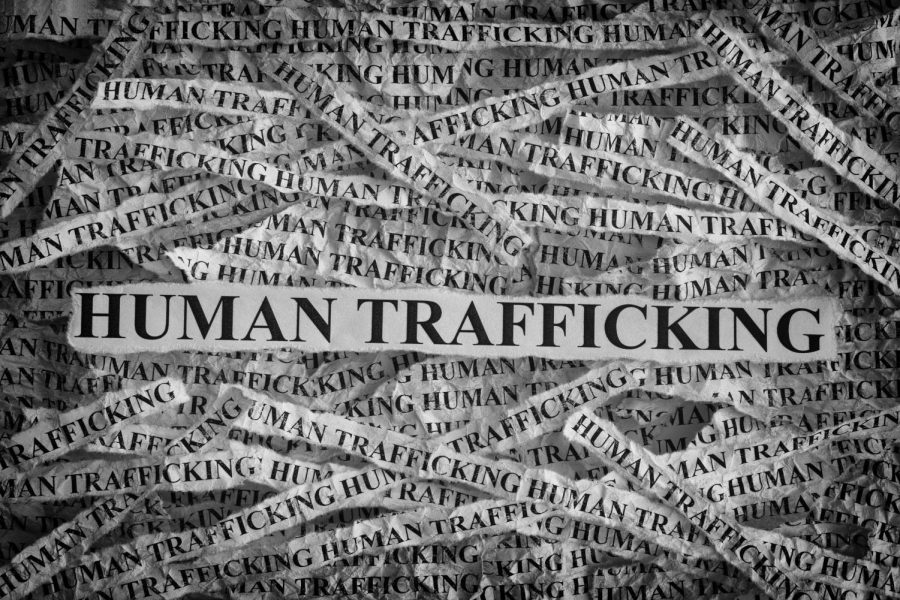Human trafficking is a bigger issue than we think
February 17, 2022
Human trafficking is a global issue. Often referred to as modern-day slavery, it is a complete violation of basic human rights. Individuals are forced, manipulated and coerced into labor and sex acts. We now need to move past the stereotypes and myths that surround human trafficking. It is time people understand the truth and bring more awareness to the horrific acts.
The misconceptions
Misconception: Victims are only taken against their will and held by bondage.
More times than not, they use psychological abuse as a means of control. Fear, trauma, addiction, loved ones and poverty are all reasons someone might give control to their trafficker.
Misconception: Victims are desperate for escape and will ask for help when they can.
Those who are trafficked might not seek immediate help due to feelings of shame, self-blame, fear or even specific instructions from their traffickers. They don’t always realize that they have rights, according to the U.S. Department of Health and Human Services.
Misconception: It only happens on the Mexican-American Border.
The top ten states for human trafficking in 2021 were (in order 1-10) Nevada, Mississippi, Florida, Ohio, Georgia, Delaware, California, Missouri, Michigan and Texas.
Who is at risk?
There isn’t one stereotype of people that are trafficked. It isn’t one size fits all, but there are many factors that can cause an individual to be at a higher risk of being trafficked. People that are runaways/homeless, gang-affiliated, living in poverty, a part of dysfunctional/unstable families, in the child welfare system, an unaccompanied minor, those with mental health issues or disorders or someone who has poor self-esteem are at risk.
Members of the LQBTQ+ community are 7 times more likely to be trafficked, as reported by Polaris. Brittany Schreiber, Program Director of Rockford Alliance Against Sexual Exploitation (RAASE) says that despite the wide acceptance of LGBTQ+ people, they still struggle to find resources, which puts them at more risk.
“I know the Liam Foundation is doing excellent work with them, but it’s hard because some shelters don’t accept LGBTQ, or maybe an individual is going to a women’s shelter because it’s how they identify but that shelter isn’t accepting of them, putting them at a greater risk of becoming homelessness,” Schreiber said. “They are in the process of trying to figure out who they are and their identity, pimps/traffickers know that’s a vulnerability.”
It does happen in your community
In 2017, Illinois was ranked the 11th state in the nation for the number of human trafficking cases, according to the Illinois Human Trafficking Task Force. Furthermore, between 16,000 and 25,000 women and children are trafficked in Chicago alone each year.
Celsy Young, communications director of the Center for Prevention of Abuse in Peoria, explained that since they opened their human trafficking department in 2018, they have helped over 100 victims.
What you can do to help
Get educated and know the red flags. It can be harder to identify if an individual is being trafficked, but knowing which signs to look for will help. Those being trafficked do not identify that way, making it harder to recognize, but if you are aware of the warning signs you are more likely to notice.
You can donate money, items or even your own time to help. RAASE provides training for those who want to be educated and proactive.
As a parent or educator, don’t be afraid to have those uncomfortable conversations.
“Teaching kids what safe boundaries are and who safe people are, but also as they grow and develop, teach them it’s OK to have a relationship and what a healthy relationship looks like,” Schreiber said.
It is those building blocks that help kids grow up to form healthy relationships and have good self-esteem, so they are less likely to be at risk for trafficking. With the prime human trafficking ages being so young, if we wait until they are adults, it could be too late.
In order to make a change, you have to want it. Human trafficking is a serious issue that doesn’t have enough awareness, so make it your personal mission to see a change in the way it is handled.







